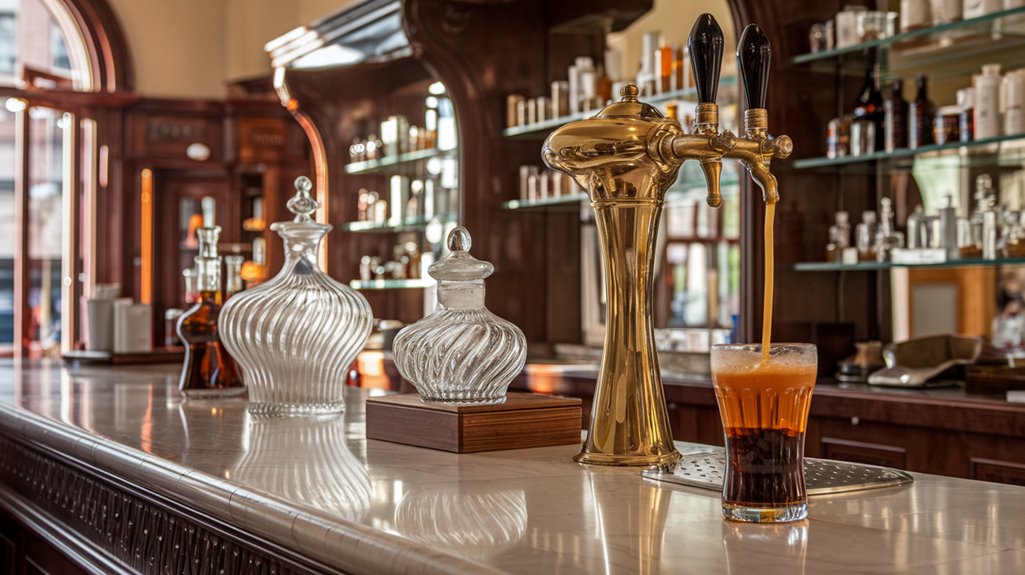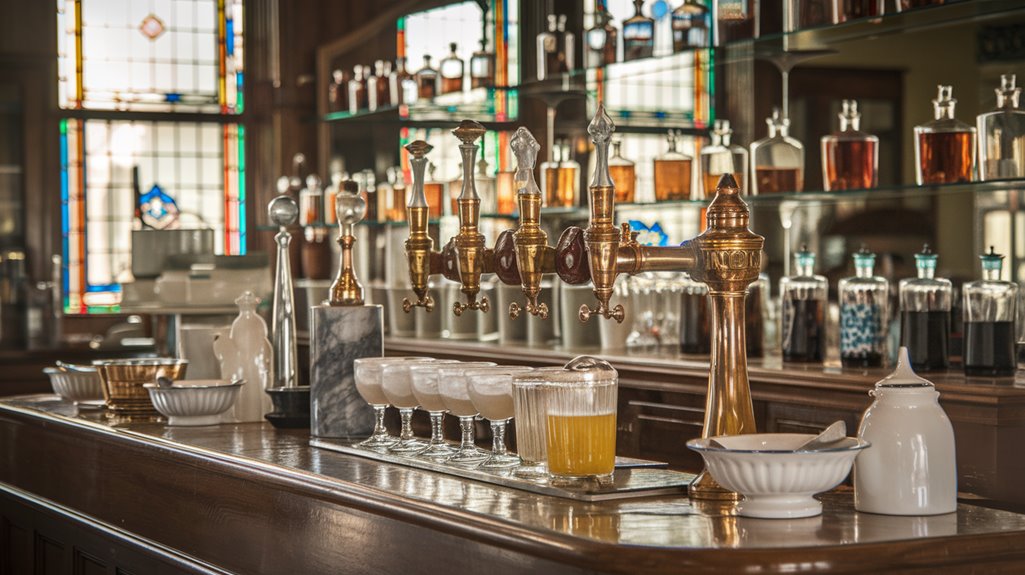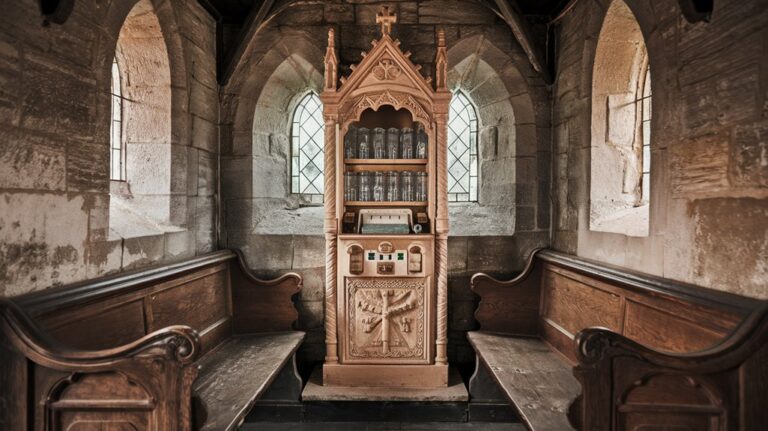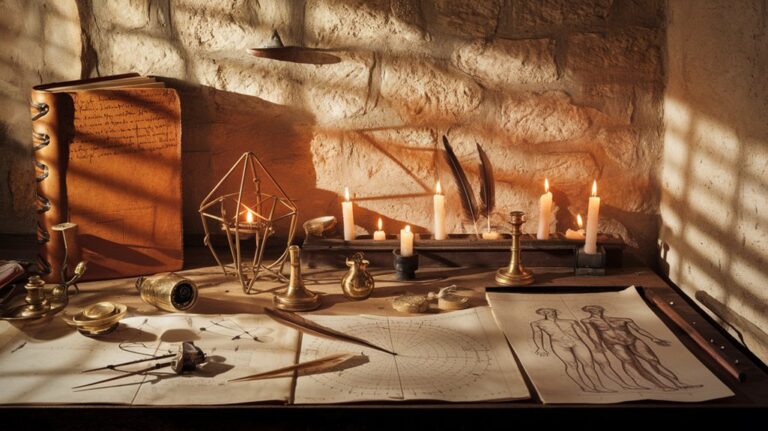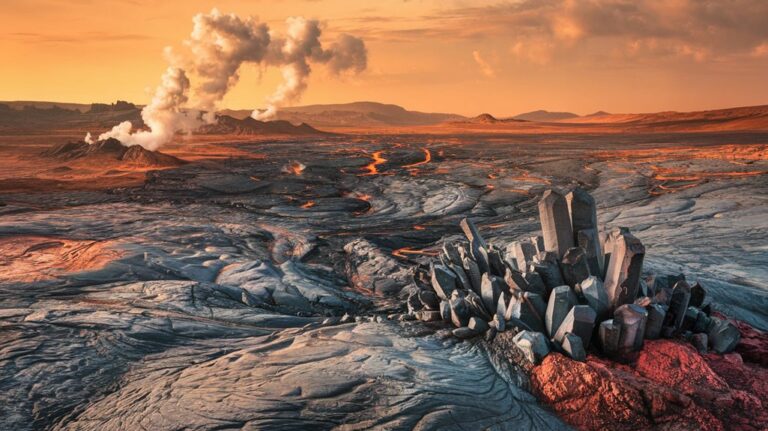Soft Drinks’ Surprising Origins: From Fizz to Fortune
Did you know that Americans consume over 44 gallons of soda per person each year? While you're sipping on that carbonated beverage, you might think you're enjoying a purely American invention. Yet, the fizzy drinks you love today actually trace their origins to ancient Middle Eastern sherbet makers and European scientists. The journey from those early fruit-infused concoctions to today's billion-dollar industry reveals a fascinating tale of innovation, chemistry, and cultural exchange that might surprise you.
The Middle Eastern Roots of Modern Refreshments
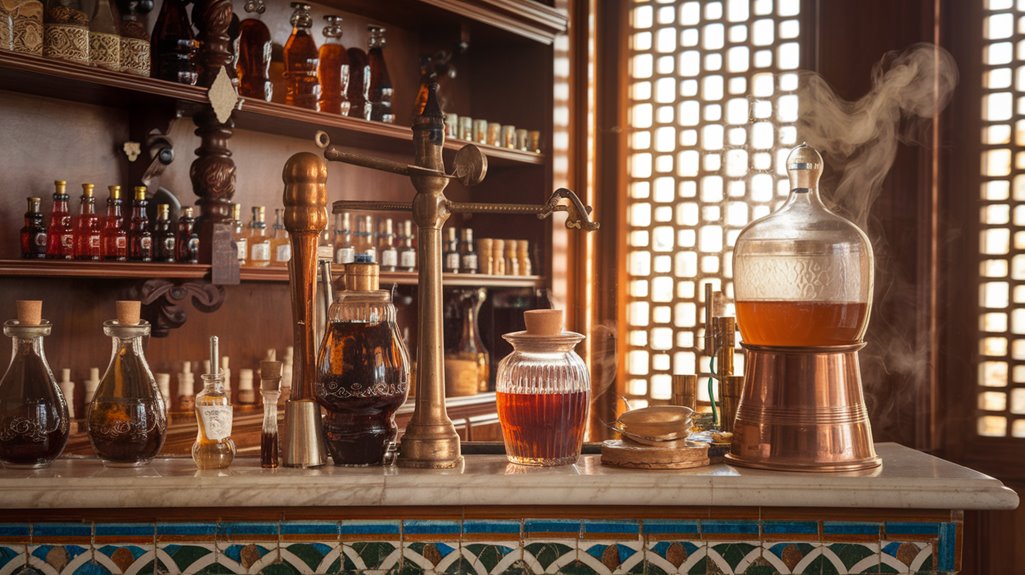
While many people associate soft drinks with modern American culture, these invigorating beverages actually trace their origins to the Middle East. Long before carbonated sodas filled store shelves, sherbet history reveals a sophisticated drink made from crushed fruits, herbs, and flowers that captivated both local populations and Western travelers like Lord Byron.
You'll find that Middle Eastern influence didn't stop there. Ayran variations spread across cultures, from Turkey's yogurt-based refreshment to Iran's doogh and Albania's dhallë. The traditional method involved shaking milk in waterskins to achieve the perfect consistency.
These traditions shaped European drinking habits, leading to the creation of sweetened beverages like 'water imperial' and eventually modern lemonade. Traditional sherbet was often served in ornate kullehs with gilt flowers, making the drinking experience both refreshing and visually appealing.
What's particularly fascinating is how these drinks gained popularity due to their ability to be preserved when refrigeration wasn't available and fresh fruit was scarce.
The Scientific Revolution Behind the Bubble
You might be surprised to learn that a clergyman, Joseph Priestley, pioneered modern carbonation techniques in 1772 with his groundbreaking apparatus.
His innovation inspired others like Thomas Henry and Jacob Schweppe to commercialize the process, leading to the first mass-produced sparkling beverages.
They discovered that combining cold temperatures with high pressure created the perfect environment for those magical bubbles you enjoy today. Today, this scientific approach has evolved into forced carbonation methods, which remain the industry standard for large-scale beverage production.
The Compagnie de Limonadiers formed in Paris marked one of the earliest organized soft drink ventures in 1676, selling lemonade to thirsty customers.
This scientific breakthrough paved the way for everything from mineral waters to the invention of Coca-Cola in 1886.
From Street Vendors to Global Empire
Long before soft drinks became a global phenomenon, French entrepreneurs laid the foundation for the modern beverage industry in 1676 when the Compagnie des Limonadiers began selling sweetened lemon drinks on the streets of Paris.
The discovery of carbonating water in 1767 by Joseph Priestley revolutionized beverage production. From these humble street vendors emerged an empire that would transform drinking habits worldwide. The real breakthrough came when J.J. Schweppe commercialized carbonation in 1783, paving the way for future innovations. Southern pharmacists were particularly influential in blending patent medicines with carbonated water at their soda fountains.
By the 1880s, American pharmacists like Dr. Pemberton and Dr. Thompson turned their medicinal concoctions into beloved beverages, creating Coca-Cola and Moxie respectively. Under Asa Chandler's leadership, Coca-Cola expanded nationwide by 1895, pioneering a business model that relied on local bottlers.
Today, you'll find these drinks have evolved into a projected $711.30 billion global empire, with brands like Fanta reaching consumers in every corner of the world.
The Art of Manufacturing Carbonated Magic
Creating carbonated soft drinks requires four essential manufacturing steps that transform simple ingredients into the fizzy beverages we love.
The process starts with water treatment using advanced filtration and UV purification. Next, mixing techniques combine treated water with syrups, sweeteners, and flavors in specialized blending tanks. This careful mixing ensures that quality standards comply with strict industry regulations. Modern facilities use Industry 4.0 technology to monitor and optimize every production phase.
The carbonation chemistry then takes over as CO2 is injected under high pressure while the liquid is chilled to create that signature fizz.
You'll witness a fascinating process where:
- Massive tanks swirl with colorful syrups and crystal-clear water
- Powerful agitators blend ingredients into a uniform mixture
- Bubbles dance through the liquid as CO2 dissolves
- Pristine bottles glide through high-speed filling lines
- Freshly sealed containers emerge ready for your enjoyment
Finally, automated packaging systems prepare the drinks for their journey to your local store.
How Distribution Changed the Drinking Game
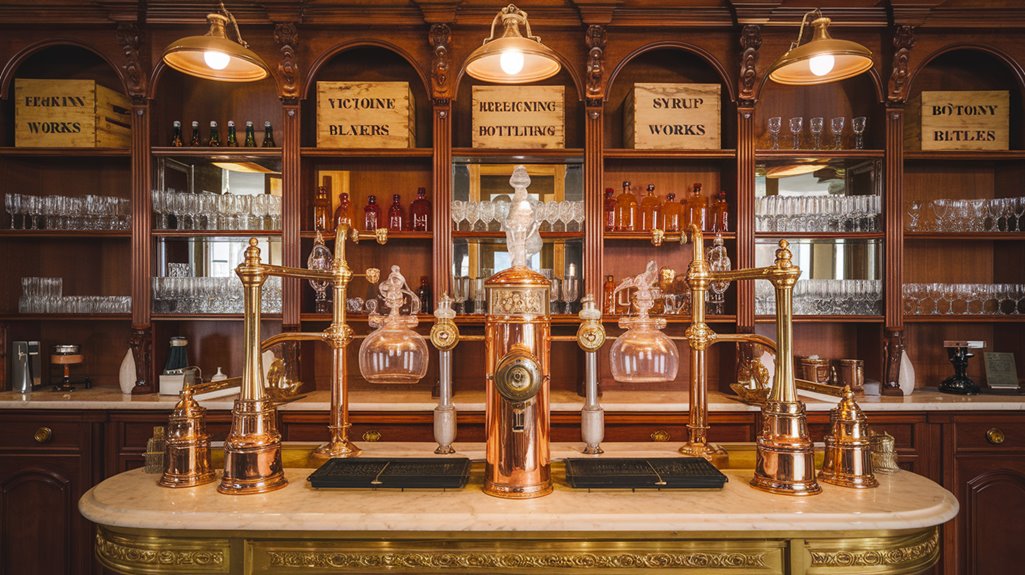
While soft drinks originated in pharmacies as medicinal tonics, their journey to becoming a global phenomenon hinged on revolutionary distribution methods.
RC Cola made history by becoming the first canned soft drink in 1954, marking a major shift in beverage packaging.
You'll find that bottling techniques transformed dramatically, from the first filling machines in 1850 to the game-changing crown bottle cap that kept your drinks fizzy. The industry's real breakthrough came in 1899 when Coca-Cola established its national bottling network. The great temperance beverage marketing angle helped drive nationwide acceptance and distribution success.
The vending evolution tells another fascinating story.
You've probably noticed the shift from simple ice coolers to sophisticated machines that mix your drink on the spot using "post-mix" technology. This innovation, along with strategic market expansion after World War II, helped create today's $392.6 billion industry.
Companies like Pepsi even challenged the status quo, offering 12-ounce bottles at 6-ounce prices, forever changing how you enjoy your favorite carbonated beverages.

